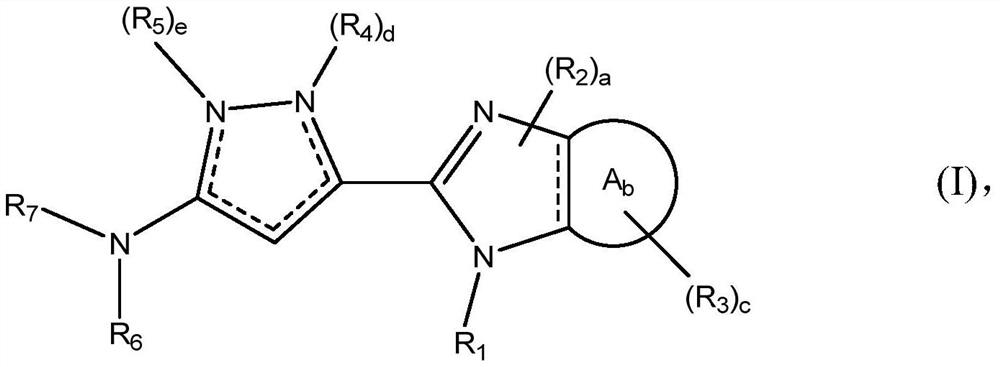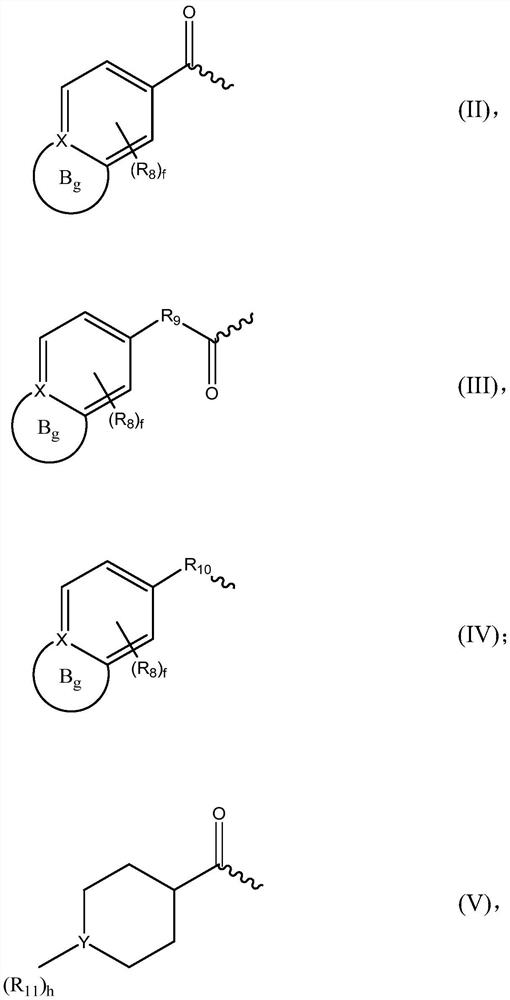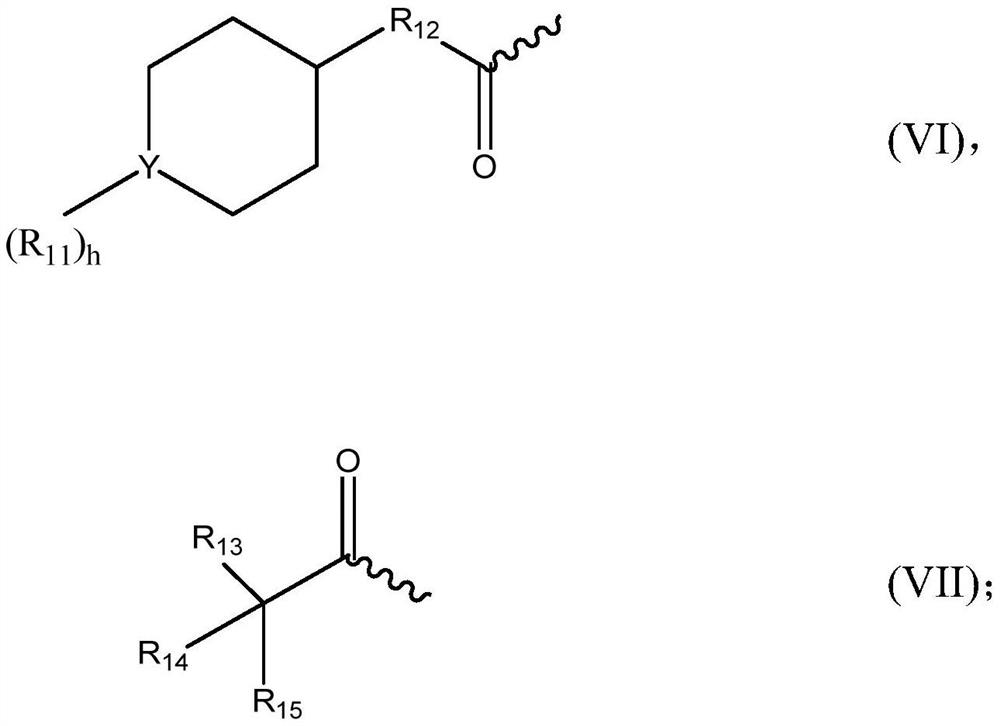Selective foxo inhibitors for treatment of diabetes and other disorders related to impaired pancreatic function
A free and compound technology, applied in the field of selective FOXO inhibitors, can solve the problems of unsatisfactory insulin health outcomes and daily life burden of patients
- Summary
- Abstract
- Description
- Claims
- Application Information
AI Technical Summary
Problems solved by technology
Method used
Image
Examples
Embodiment 1
[0277] The purpose of this example is to demonstrate the synthesis of intermediate compounds that can be used to produce the compounds described above.
[0278]
[0279] To a solution of 5-nitro-1H-pyrazole-3-carboxylic acid (4.3 g, 27.5 mmol) in methanol (50 mL) was added thionyl chloride (5.2 mL, 72 mmol) at 0°C. The reaction mixture was refluxed for 3 hours and concentrated to give the methyl ester (4.62g). This methyl ester (4.62 g, 27 mmol) was dissolved in DMF (30 mL). To the solution was added PMB-Br (6.5 g, 32 mmol) and potassium carbonate (7.45 g, 54 mmol). The reaction mixture was heated to 75 °C for 3 hours and water (50 mL) was added. The resulting mixture was extracted with ethyl acetate (50 mL×3), and the organic layer was washed with water and brine. The organic layer was dried over sodium sulfate and concentrated to give crude product (8.46g). The crude product was recrystallized from ethyl acetate / hexanes (10 mL:25 mL) to afford the pure major regioisom...
Embodiment 2
[0284] The purpose of this example is to demonstrate the synthesis of intermediate compounds that can be used to produce the compounds described above.
[0285]
[0286] To the nitro compound (1 g, 3.4 mmol) in methanol (10 mL) was added Pd / C (182 mg, 10%, 0.05 equiv). The resulting mixture was stirred overnight under an atmosphere of hydrogen. The solid was filtered off and the solvent was removed on a rotavapor. The crude product was purified on silica gel using 10% methanol in dichloromethane to recover 460 mg of starting material and afford 480 mg of product (99% based on recovery of starting material).
[0287] 3-Chloro-4-methoxybenzoic acid (360 mg) was treated with oxalyl chloride (0.42 mL, 2.5 equiv) and DMF (one drop) in dichloromethane. When no bubbling occurred, the reaction mixture was concentrated and redissolved in dichloromethane (10 mL). A solution of the acid chloride was added slowly to the above amine (480 mg) in DCM (10 mL) and triethylamine (0.77 mL)...
Embodiment 3
[0290] The purpose of this example is to demonstrate the synthesis of intermediate compounds that can be used to produce the compounds described above.
[0291]
[0292] The starting material (10.8 mg) was treated with TFA (2 mL) at 70 °C for 15 min. Methanol was added and the solvent was removed under reduced pressure. The resulting mixture was triturated with ethyl acetate and hexanes (2 mL; 1:1) to afford the product (11.3 mg as TFA salt). The product was confirmed using LC / MS analysis.
[0293] To a solution of the above product (5 mg) in DCM (1 mL) was added acetic anhydride (0.02 mL). The reaction was stirred overnight. Add more Ac 2 O until the reaction was complete by LC / MS. The solvent was evaporated and the product was triturated with acetate and hexanes (1 mL; 1:1) to afford the product. The product was confirmed using LC / MS analysis.
PUM
 Login to View More
Login to View More Abstract
Description
Claims
Application Information
 Login to View More
Login to View More - R&D
- Intellectual Property
- Life Sciences
- Materials
- Tech Scout
- Unparalleled Data Quality
- Higher Quality Content
- 60% Fewer Hallucinations
Browse by: Latest US Patents, China's latest patents, Technical Efficacy Thesaurus, Application Domain, Technology Topic, Popular Technical Reports.
© 2025 PatSnap. All rights reserved.Legal|Privacy policy|Modern Slavery Act Transparency Statement|Sitemap|About US| Contact US: help@patsnap.com



